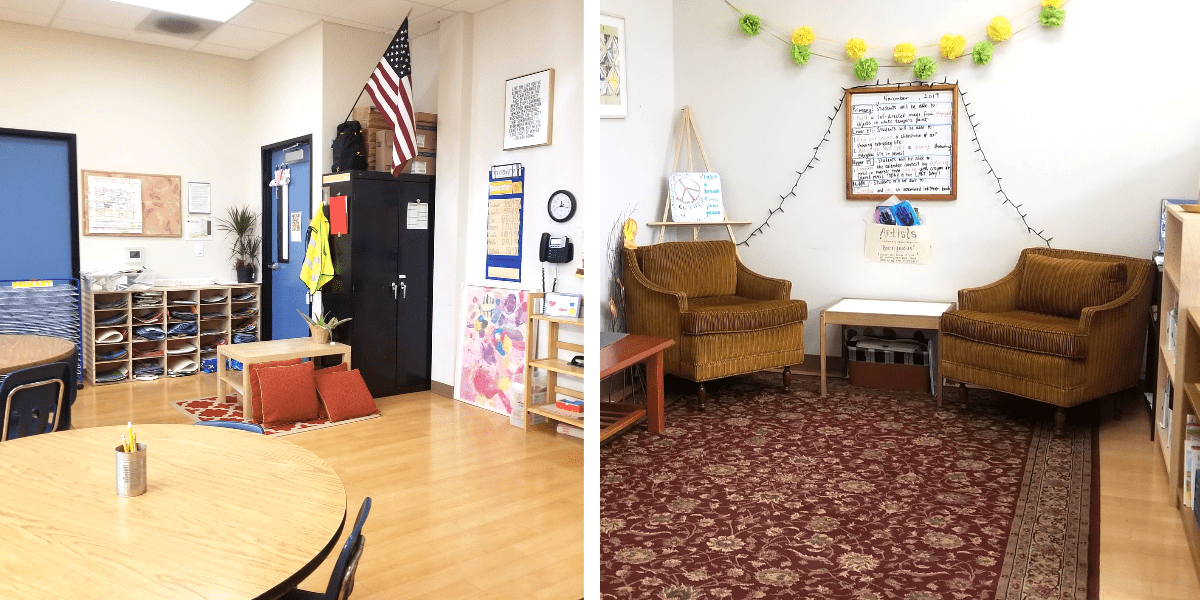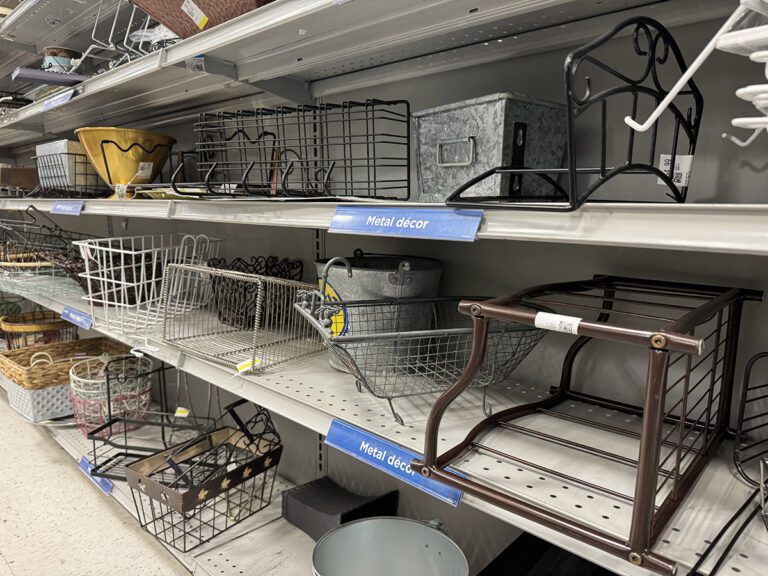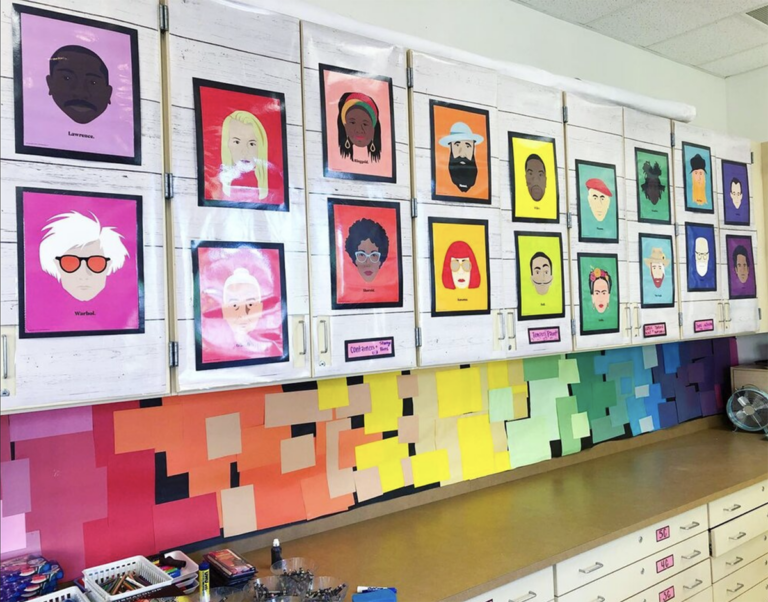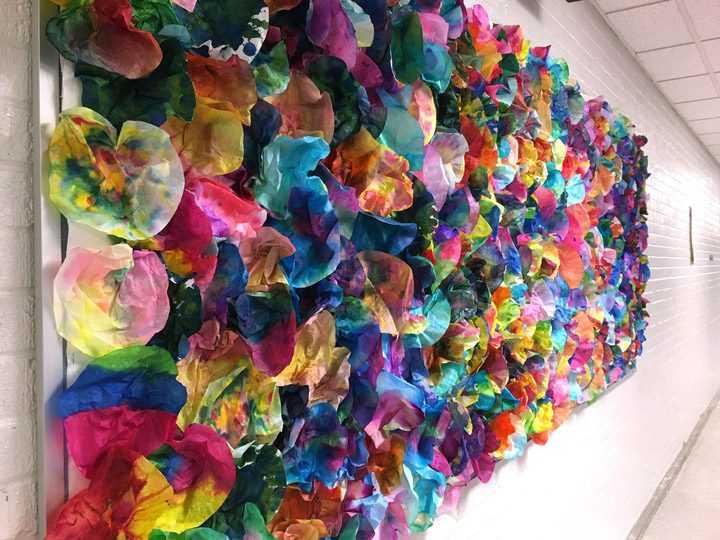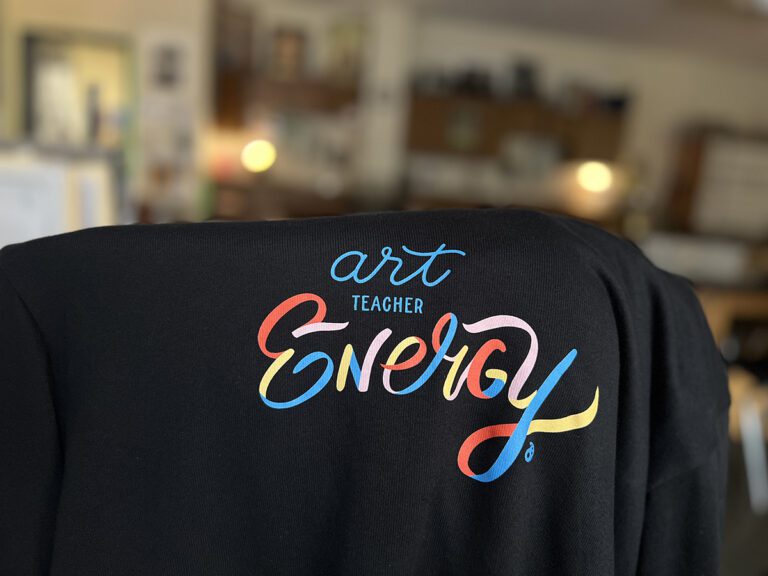The art room is a special place where form must meet function. After all, it is a production facility! Students churn out dozens of artworks daily, and art teachers juggle competing demands to run a smooth operation. To top it all off, the needs of today’s students may expand to include more accommodations than ever before, such as supporting the predicted effects of long Covid. We must pay attention to the design of our learning environments and how we approach teaching our increasingly diverse learners in order to stay on top of our teaching game.
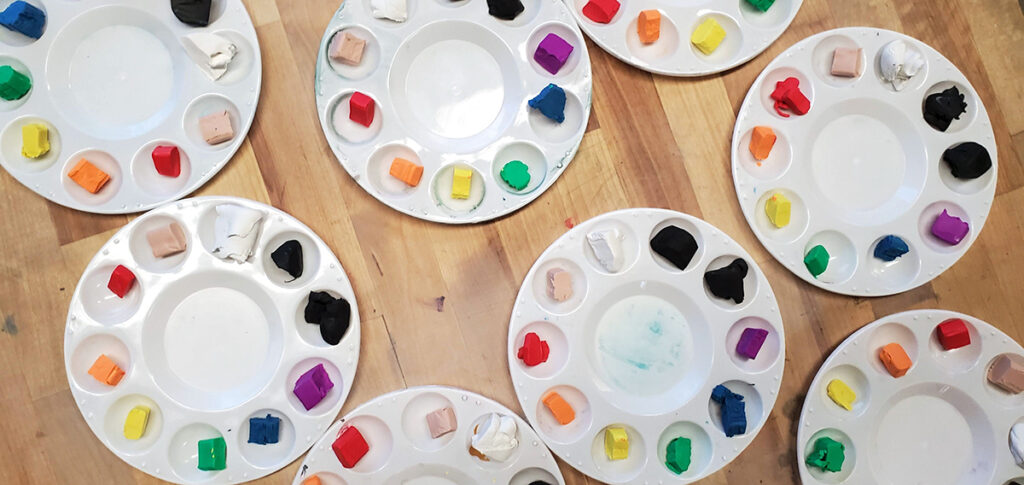
Is the “more is more” approach best?
Art teachers often put a great deal of thought into organizational methods, the display of student artwork, and the accessibility of materials. We consider students’ physical space and movement, and we are always on the lookout for hacks, tips, and tricks that make our lives easier.
Yet, as teachers increasingly share views of their classrooms on social media, there appears to be a trend of curating heavily-decorated spaces. Rooms on our screens explode with color, themes, and wall-to-wall stimuli. Seeing these ambitious classrooms earn so many Likes may create pressure to keep up. These spaces are often impressive and beautiful, but it begs the question: is the “more is more” approach best for student learning?
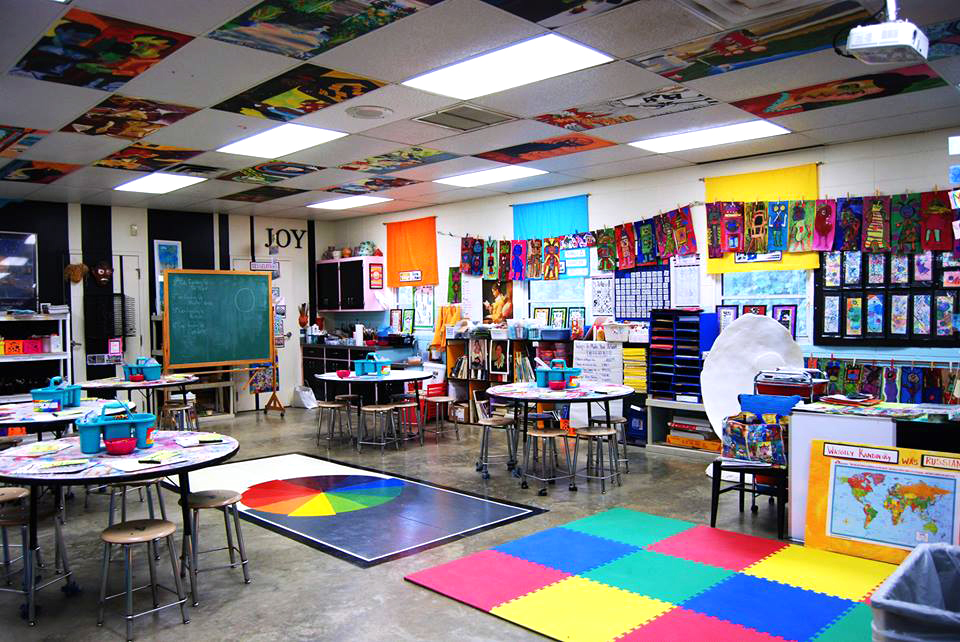
Many teachers believe classrooms should be layered with color and information, creating a fun and educational environment. However, in March 2022, psychology researchers found that “on-task behavior was lower in classrooms containing greater quantities of visual noise and color variability, and in classrooms with either relatively small or large amounts of displays.” Furthermore, classrooms loaded to the brim with stuff may be less flexible and adaptable for student use.
Art educators often describe their classrooms as chaotic, noisy places. When high energy mixes with overstimulating visuals, it’s not surprising that adults and students alike can experience sensory overload. But, fear not! You can address this by reimagining the design and feel of your space. Making deliberate choices and working with what you have can help you transform your art room into a functional, flexible, and inviting space.
Let’s look at 27 ways you can modify your art room to best support your student artists.
1. Streamline the environment.
Like it or not, art teachers are known for attracting clutter. We require a ton of supplies and serve high numbers of students. Despite our best efforts, the mess sometimes gets the best of us.
Start managing your collections by auditing your decor and removing old projects. Pare down student artwork and anything decorative you have displayed on walls, ceilings, tabletops, windows, and doors. Declutter walls and preserve spaces where the eye can rest for cognitive energy breaks. In her article about living and learning with autism, design studies researcher Clare L. Vogel notes, “The classroom arrangement should contribute to the child’s grasp of order and space.” In practice, this translates into establishing good habits of putting things away, taking work down, and sending it home regularly.
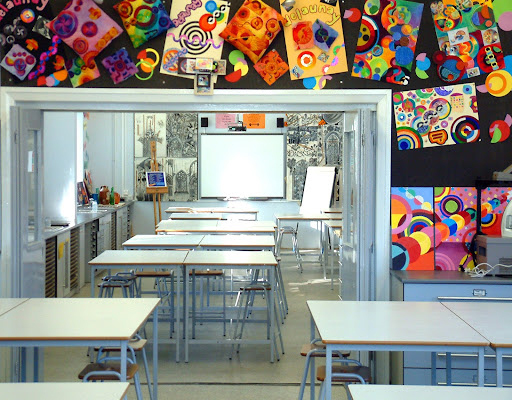
Here are a few helpful approaches:
- Limit areas layered with color or filled with patterns to a specific section of the room.
- Allow for single colors or neutrals on your other walls to offset busier displays.
- Showcase art objects thoughtfully and intentionally.
- Store supplies and artworks in furniture-like containers that blend into the room.
2. Make it adaptable.
Flexible seating improves academic performance. Modify the layout of your room, perhaps aligning it with different portions of your art lesson. Consider rethinking your teaching modes to take full advantage of the new arrangement. Offer students flexible seating when appropriate so they can optimize learning more comfortably. Creating work zones can promote focused attention and offer students control. Consider flexibility when designing your zones.
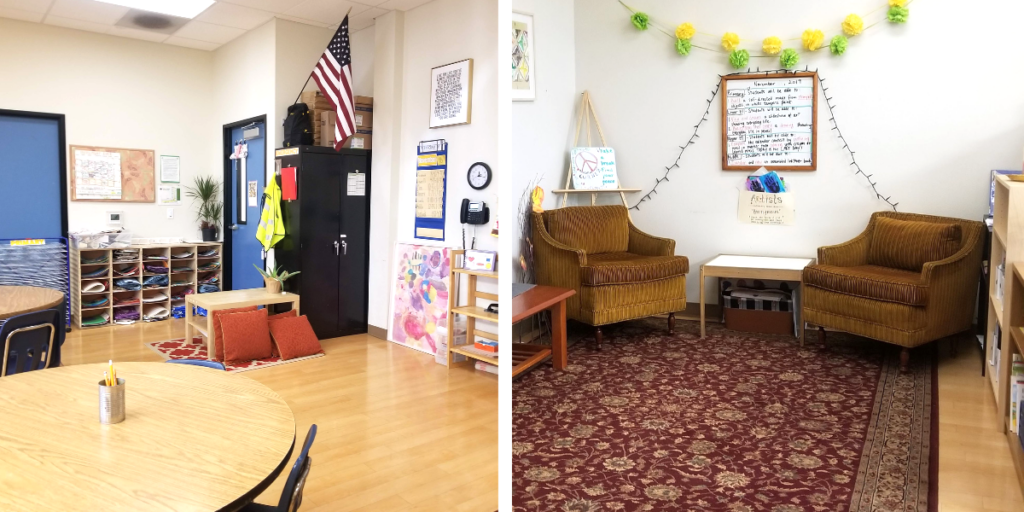
Here are some free and easy ways to add adaptability:
- Push tables together to make collaborative groups.
- Set up independent desks for individual students.
- Incorporate workspaces at varying heights, such as adding a low table for seating on the ground.
- Arrange smaller spaces with a maximum capacity of two or three students.
Providing elements that add in or filter out sensory input creates cozy, inviting, and physically safe environments for all students. The spaces can encourage students to take breaks, arrange their materials, and work quietly.
Add to your flexible spaces with these low-cost ideas:
- Place a small rug and lamp near the bookshelf.
- Lay a non-slip mat under your sink.
- Hang or place plants (real or faux) throughout the room.
- Scatter pillows or bean bag chairs for floor seating.
- Create work zones using area rugs.
- Reduce stimuli with screens and partitions.
- Opt for moveable furniture with casters to quickly transform areas.
3. View the space as an experience.
Environmental factors such as light, sound, room temperature, and air quality can affect student learning. They can also contribute to students’ comfort and set the tone for the energy in the room. On Domino Magazine’s Design Time Podcast, Interior Designer Jeremiah Brent details his routine to curate the “experience of a space” in his home. He explains, “I set the energy for the house before the kids wake up. There’s always music playing, candles lit, or incense. The lights are on in a certain way; the windows are open. I really believe in that energy.”
Teachers know how palpable this sentiment is. You can also intentionally stage a refreshing atmosphere with some simple changes and forethought. Setting behavioral expectations goes a long way, but the preparation of the environment sends strong signals directly to the senses. For example, a noticeable shift occurs in students’ voices, choices, and body language when they walk into a dim room instead of one lit like a grocery store.
Consider making adjustments to create more calming conditions:
- Shade windows for filtered natural light.
- Add task lighting in independent work areas.
- Use fluorescent light-diffusing covers to reduce eye strain.
- Open windows or use fans to circulate fresh air.
- Play gentle background music or white noise.
- Use soft, natural scents, or opt for an odor-free room instead of strong fragrances.
- Introduce soft furnishings to dampen excessive sound.
4. Consider the spatial arrangement.
Art rooms come in various shapes and sizes, and creating the ideal layout is always a puzzle. Like urban planners, teachers have multiple factors to consider when designing a classroom space. Think about walking down a street and how you use signs, landmarks, and other visual markers to confirm you are in the right place. Support students’ comfort by leveraging similar sensory cues to direct their movement and designate their work areas.

Here are some suggestions:
- Widen spaces between student tables to create clear, unobstructed pathways.
- Define walkways using bright tape or painted footprints where you would like students to stand and line up.
- Use area rugs or color-coding to represent zones visually, and set boundaries for their use.
- Display a fascinating sculpture to create a memory and inspire conversation.
- Hang signs and use numbering systems to create predictable movement routines.
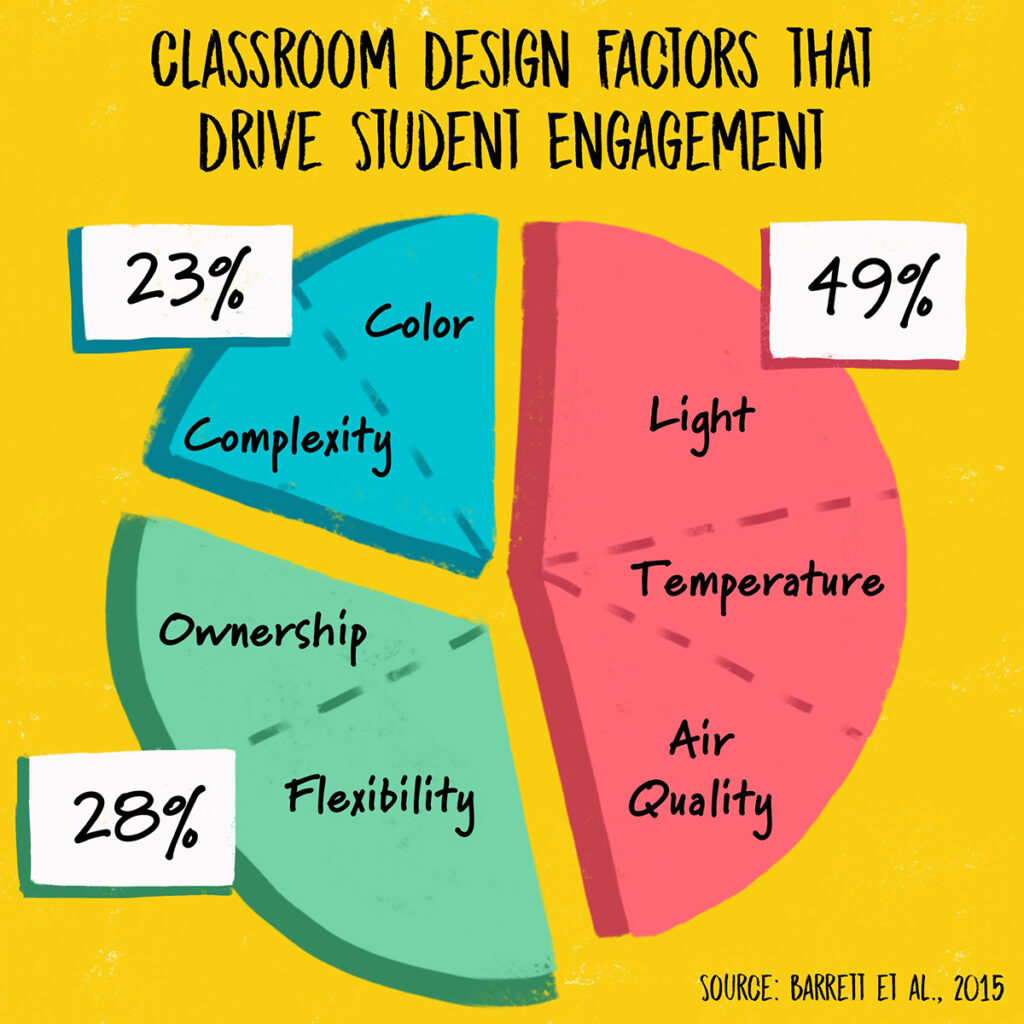
Designing an inviting, functional, and flexible art room doesn’t mean you have to give up vibrant colors or exciting displays. Giving attention to your space and the ways diverse students learn best can allow you to support the factory-like function of the art room while maintaining a productive and comfortable classroom. Ask yourself what individuals and classes need throughout the day. Use this reflection to guide how you will modify the environmental factors and direct the energy in your space. Also, ask your students what they want to see in the room design! Children are intuitive about what they prefer, and they will enjoy contributing ideas about spending time in your classroom.
When you see trends online, do you feel pressure to create a particular “aesthetic” in your art room?
How do you balance designing a calm and productive environment?
Magazine articles and podcasts are opinions of professional education contributors and do not necessarily represent the position of the Art of Education University (AOEU) or its academic offerings. Contributors use terms in the way they are most often talked about in the scope of their educational experiences.
